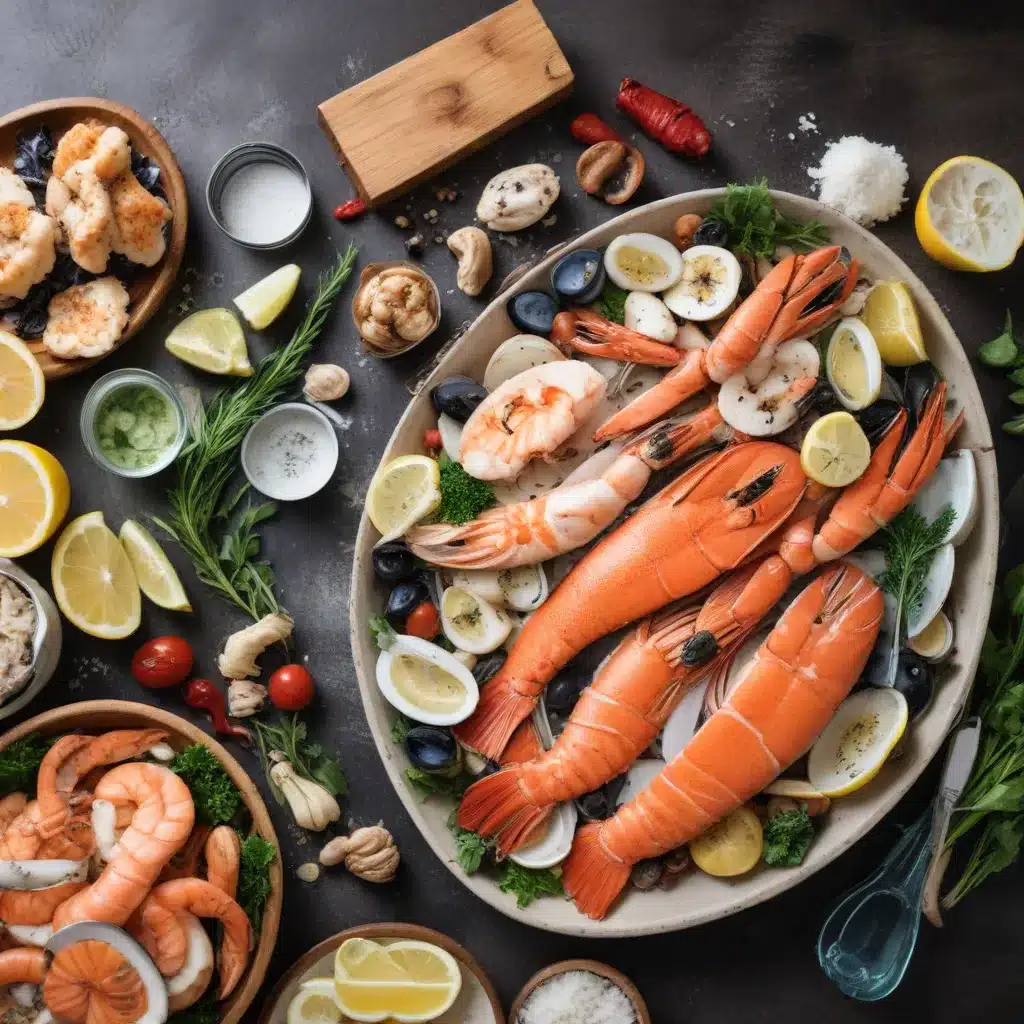
Seafood is a powerhouse of essential nutrients, offering a wide range of health benefits from improved heart health to enhanced cognitive function. However, to truly unlock the full nutritional potential of fish and shellfish, it’s crucial to understand the best practices for preparation, cooking, and storage. In this comprehensive guide, we’ll explore the nutritional advantages of seafood, uncover the secrets to preserving its vital nutrients, and provide tips to help you make the most out of your seafood dining experiences.
Seafood Nutrition and Consumption
Nutritional Benefits of Seafood
Seafood is widely regarded as a nutrient-dense, low-calorie protein source. It is rich in omega-3 fatty acids, which are essential for heart health and brain function. Fatty fish, such as salmon, tuna, and mackerel, are particularly high in these beneficial fats. Seafood also provides a wealth of other essential vitamins and minerals, including vitamin D, vitamin B12, iron, zinc, and selenium. These nutrients play crucial roles in supporting the immune system, maintaining strong bones, and promoting overall well-being.
Dietary Considerations for Seafood
The Dietary Guidelines for Americans recommend that adults consume at least 8 ounces of seafood per week, with a focus on a variety of fish and shellfish. For pregnant or nursing women, the guidelines suggest 8 to 12 ounces of seafood per week, as the nutrients in seafood are particularly important for fetal and infant development. When selecting seafood, it’s important to choose options that are low in mercury, such as shrimp, salmon, pollock, and catfish.
Sustainable Seafood Choices
Sustainability is a key consideration when purchasing seafood. The United States is a global leader in sustainable seafood, with both wild-caught and farmed fish and shellfish managed under robust environmental regulations. When shopping for seafood, look for the Marine Stewardship Council (MSC) or Aquaculture Stewardship Council (ASC) certifications, which indicate that the seafood has been sourced from well-managed, sustainable fisheries or farms.
Preparation and Cooking Techniques
Preserving Nutritional Value
To maximize the nutritional benefits of seafood, it’s essential to handle and prepare it properly. When transporting and storing seafood, keep it cold and refrigerated to maintain freshness and prevent the growth of harmful bacteria. Avoid soaking seafood in water, as this can leach out water-soluble vitamins and minerals. Instead, rinse seafood under cool, running water just before cooking.
Cooking Methods
The way you cook seafood can also impact its nutritional value. Baking, grilling, poaching, and steaming are excellent cooking methods that help preserve the delicate flavors and nutrients of seafood. Techniques like pan-searing, sautéing, and sous vide can also be used to create flavorful, nutrient-rich dishes. Avoid frying seafood, as the high heat and oil can degrade the beneficial omega-3 fatty acids.
Flavor Profiles
Seafood’s versatility allows it to be paired with a wide variety of flavors and seasonings. For a simple, yet delicious preparation, try seasoning with lemon, garlic, herbs, or a white wine sauce. Bolder flavors, such as curry, miso, or teriyaki, can also complement the natural sweetness of many types of seafood. When exploring new recipes, don’t be afraid to experiment with global seafood traditions, such as ceviche, sashimi, or bouillabaisse.
Seafood Varieties and Characteristics
Finfish
Finfish, such as cod, tilapia, halibut, and flounder, are excellent sources of lean protein and essential vitamins and minerals. These fish are often versatile in the kitchen, adapting well to a variety of cooking methods and flavor profiles.
Shellfish
Shellfish, including shrimp, scallops, mussels, and oysters, are prized for their delicate, sweet flavors and unique textures. These seafood options are rich in zinc, iron, and other key nutrients, making them a nutritious addition to any diet.
Crustaceans
Crustaceans, such as lobster, crab, and crawfish, offer a unique, slightly sweet flavor and a satisfying, firm texture. These seafood delicacies are packed with protein, vitamins, and minerals, and can be enjoyed in a variety of preparations, from classic Crab Cakes to elegant Lobster Bisque.
Health Impacts of Seafood Intake
Cardiovascular Health
The omega-3 fatty acids found in seafood have been shown to help reduce the risk of heart disease, lower blood pressure, and improve cholesterol levels. Regularly incorporating seafood into your diet can contribute to a healthier cardiovascular system.
Cognitive Function
The nutrients in seafood, particularly omega-3s and vitamin B12, have been linked to improved cognitive function and a reduced risk of cognitive decline. Seafood consumption may help support brain health and support healthy aging.
Immune System Support
Seafood is a rich source of zinc, selenium, and other vitamins and minerals that play crucial roles in supporting the immune system. Consuming seafood regularly may help strengthen the body’s natural defenses against illness and infection.
Regulatory Frameworks and Food Safety
Government Regulations
The U.S. Food and Drug Administration (FDA) and the National Oceanic and Atmospheric Administration (NOAA) work together to ensure the safety and quality of seafood products through mandatory inspection programs. These regulatory bodies monitor seafood at critical points along the supply chain to prevent food safety issues and ensure the integrity of the seafood industry.
Certification Programs
In addition to government regulations, there are several third-party certification programs that help consumers identify sustainable and responsibly sourced seafood. The Marine Stewardship Council (MSC) and Aquaculture Stewardship Council (ASC) are two of the most widely recognized and respected certification programs in the seafood industry.
Traceability and Transparency
Ensuring the traceability and transparency of seafood is essential for combating issues like seafood fraud and illegal, unreported, and unregulated (IUU) fishing. By working with reputable seafood suppliers and seeking out products with clear chain-of-custody documentation, consumers can have confidence that the seafood they are purchasing is safe, sustainable, and accurately labeled.
Remember, by making informed choices and understanding the best practices for preparing and cooking seafood, you can maximize the nutritional value and enjoy the many health benefits that this versatile and delicious food group has to offer. For more information and recipe inspiration, be sure to visit https://www.fishtalescafe.com.

